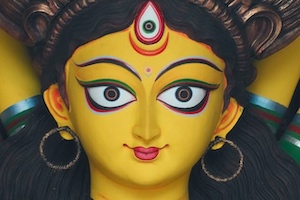Exhibition on early Bengal oil paintings and Kalighat pats opens at Alipore Museum
Times of India | 25 September 2025It will remain on view until January 3, 2026.
On show has an extensive collection of 19th and early 20th-century Bengal art, including watercolour 'Kalighat' pats with both religious and secular subjects. These are displayed alongside commissioned oil paintings, mass-produced prints, and reverse-glass paintings from Canton (present-day Guangzhou) that replicate the designs of the watercolour pats.
Every artwork depicts individuals adorned in elaborate jewellery and detailed clothing.
Women are dressed in patterned sarees of gold and red, embellished with abundant ornaments such as crowns, earrings, anklets, and necklaces. Men wear dhotis and kurtas, often complemented by capes and headdresses that rival their female counterparts.
The exhibition also features depictions of Yashoda in traditional ghagra and choli, commissioned by Gujarati and Marwari business families in Kolkata and other parts of Bengal.
Additionally, the exhibition includes reverse-glass paintings that mimic the designs of the watercolour pats, highlighting their significance.
“In more than three decades, DAG has built a strong repository of art from Bengal. While collating artworks, we realised that certain imageries were more prominent than others, which therefore could be found across all three categories, even though stylistically they may have differences,” said DAG CEO Ashish Anand.
In the 19th century, Bengal, Kolkata was a hub where tradition met modernity. The port city, a gateway for wealth and goods entering and leaving the Indian subcontinent, played a significant commercial role. Its growth spurred the development of various artistic traditions, notably the watercolour pat painting that is central to "The Babu & The Bazaar."
Indian elites closely associated with the British in business and governance sought to emulate a Westernised lifestyle, resulting in the commissioning of their deities painted with oil pigments on cloth canvas. Additionally, art prints became prominent through the flourishing printing industry as education became more accessible to the masses.
